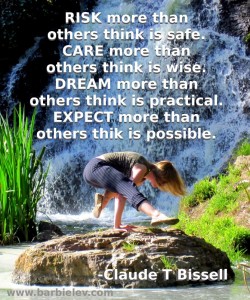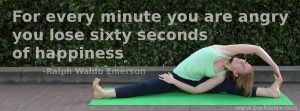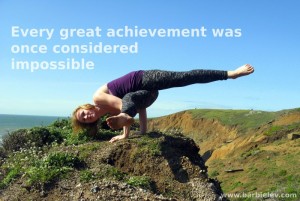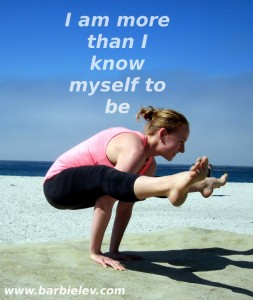So many of us succumb to procrastination in our day-to-day lives, which is essentially allowing that which matters most to give way to that which matters least. Even in yoga class, we mull over what we should’ve said in an earlier argument, repeat and re-repeat mental grocery lists, and wonder self-consciously if anyone noticed that giant zit that popped up this morning. All of this is just procrastination that prevents us from being present to the real work: the svadyaya (self-study), the dharana (concentration), and the dhyana (meditation). Just as with any other work we procrastinate from, this stuff is often scary, uncomfortable, and exhausting. Anything that that spurs wild transformation usually is.
As Rusty Wells always said in class when I practiced with him years ago (and he probably still does): “If nothing ever changes, nothing ever changes.” Next time you’re in yoga class, your mantra is, “I prioritize that which matters most in this moment.” Mental chatter is definitely going to come up, but instead of indulging in it, you notice it as an observer rather than a participant. What do you cling to? What are your recurring thoughts? When is there the most mental chatter? When is there tranquility? Distraction is going to come up too. That’s an another opportunity for svadyaya. As one of my dear teachers, Les Leventhal, always used to point out: we never stop take a sip of water or fix our hair in the poses that we love. Notice.
Once you start diving into your yoga practice, you’ll find that the habits you develop start spilling over into the rest of your life too. You run for what matters most rather than lolling about in what matters least. You seize the day. You savor the richness of each moment.
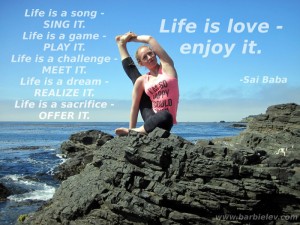
Life is a song – sing it. Life is a game – play it. Life is a challenge – meet it. Life is a dream – realize it. Life is a sacrifice – offer it. Life is love – enjoy it. -Sai Baba
On the internet, there is widespread disagreement who wrote the following poem, so if you know who the author is please let me know!
Life is an opportunity, benefit from it.
Life is beauty, admire it.
Life is a dream, realize it.
Life is a challenge, meet it.
Life is a duty, complete it.
Life is a game, play it.
Life is a promise, fulfill it.
Life is sorrow, overcome it.
Life is a song, sing it.
Life is a struggle, accept it.
Life is a tragedy, confront it.
Life is an adventure, dare it.
Life is luck, make it.
Life is too precious, do not destroy it.
Life is life, fight for it.
– Unknown
